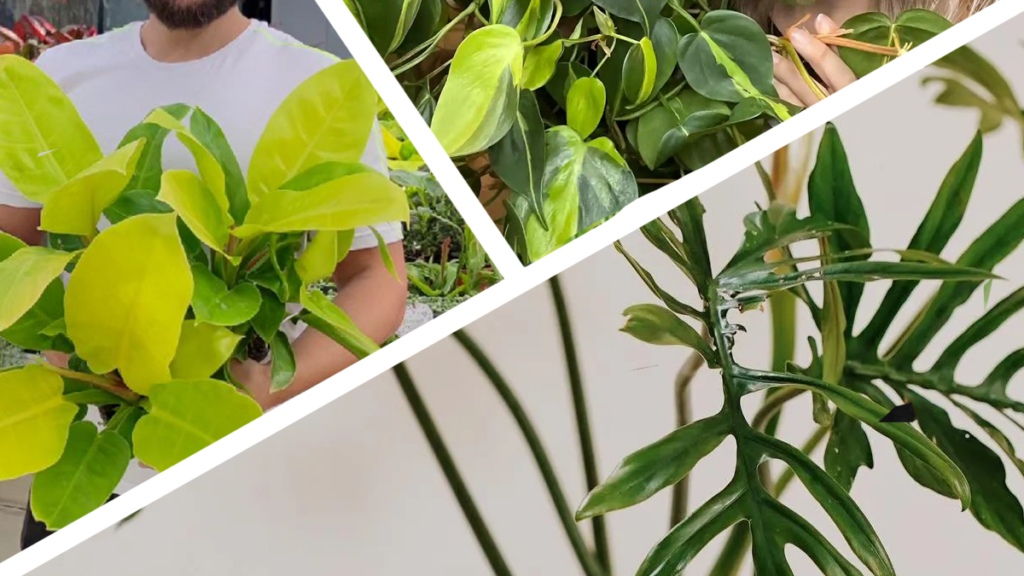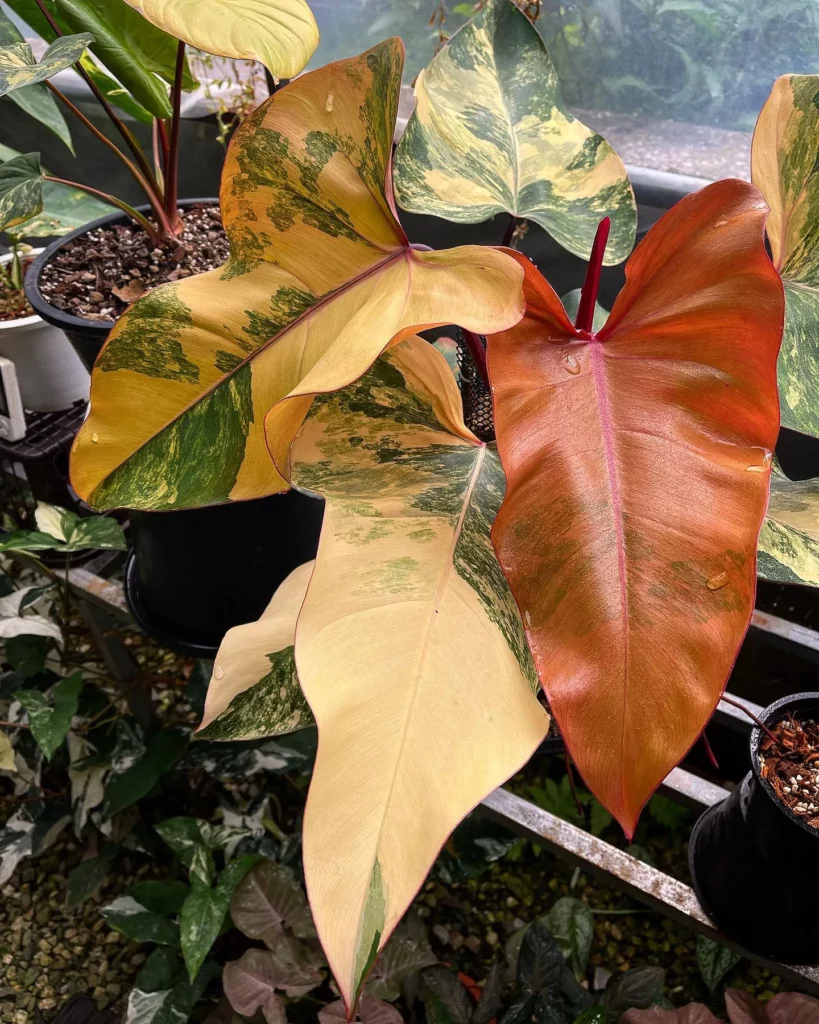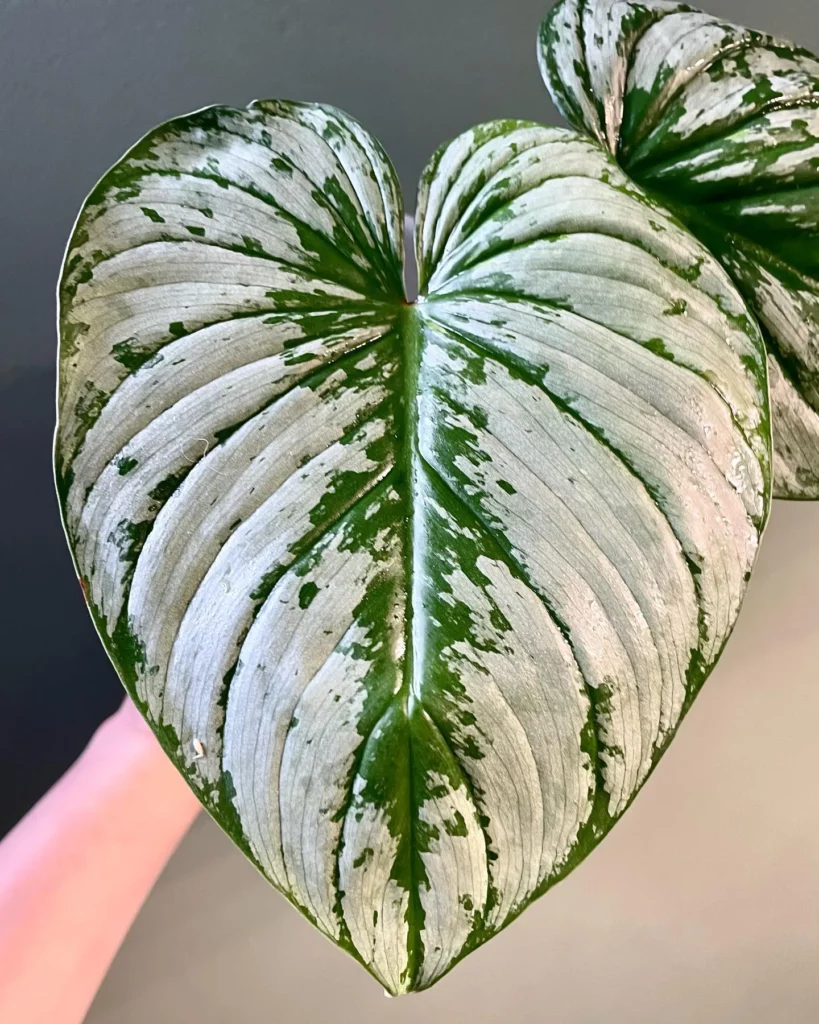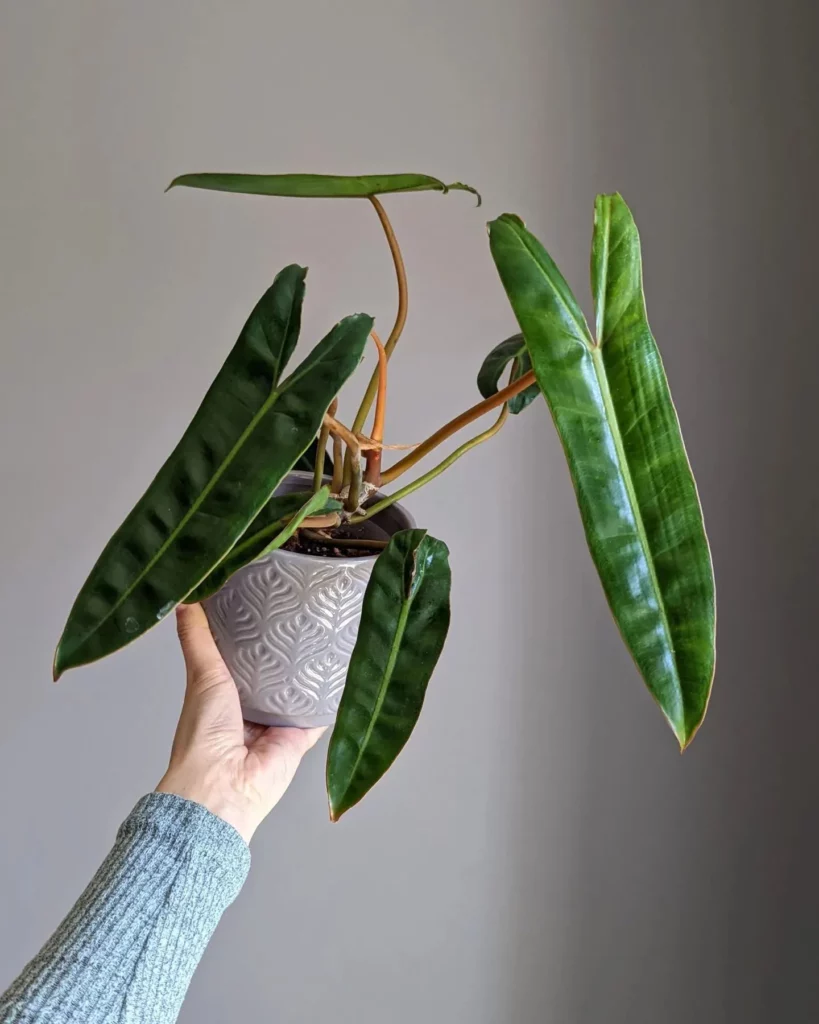The Philodendron Pink Princess is rapidly gaining popularity as one of the favorite houseplants worldwide. Its mix of green and pink colors, along with its subtle variegation, make it a truly captivating plant. Studies have shown that houseplants, like the Philodendron Pink Princess, can boost happiness and improve overall well-being.
The Allure of the Philodendron Pink Princess

Adding a touch of vibrant nature to any indoor space, the Philodendron Pink Princess stands out with its stunning variegated pink color. The unique combination of green and pink hues creates a visually striking contrast that instantly grabs attention. The delicate variegation adds an extra layer of beauty and uniqueness, making this plant a true gem.
Not only is the Philodendron Pink Princess visually appealing, but it also offers numerous benefits to its caretakers. As a houseplant, it helps purify the air by removing toxins and releasing oxygen, creating a healthier and more refreshing environment.
Furthermore, caring for the Philodendron Pink Princess can be a rewarding and calming experience. Interacting with plants has been found to reduce stress levels and promote relaxation. Whether you’re a seasoned plant lover or just starting your green journey, this rare houseplant is sure to bring joy and tranquility to your space.
With its increasing popularity, the Philodendron Pink Princess has become a must-have for plant enthusiasts and collectors around the world. Its scarcity and unique qualities contribute to its allure, making it a highly sought-after addition to any plant collection. Whether you place it on a windowsill, a desk, or a shelf, this stunning plant will add a touch of natural beauty and elegance to any space.
A Beautiful and Eccentric Houseplant
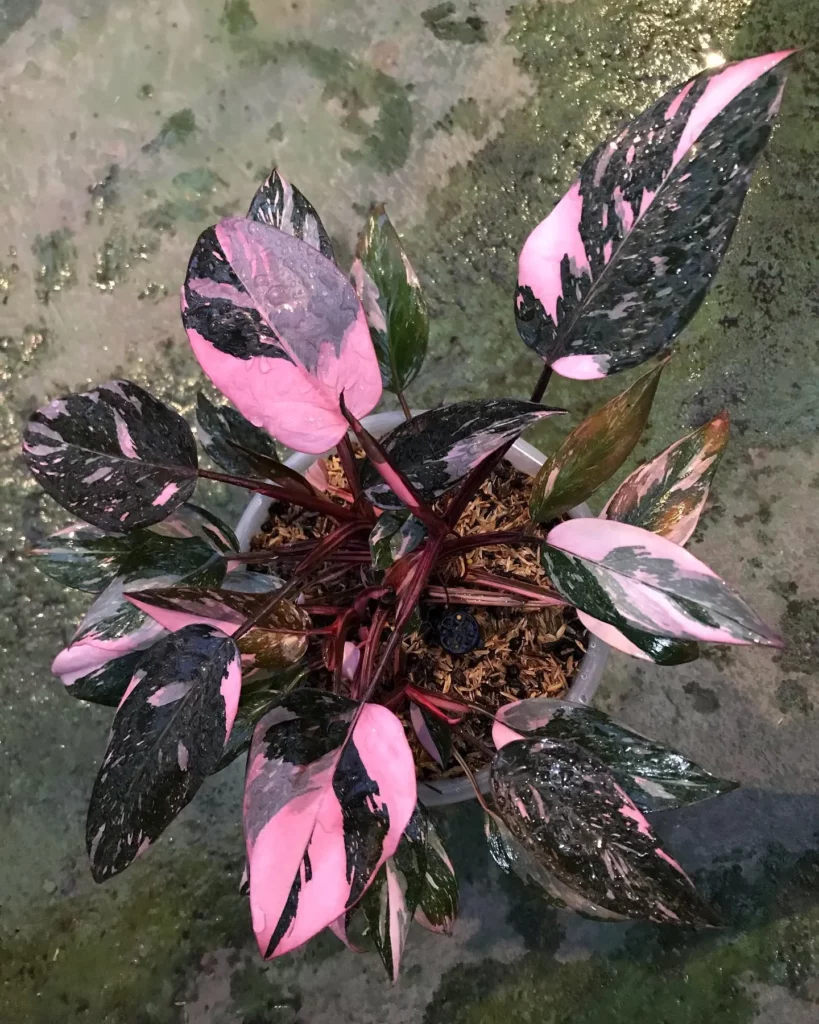


The Philodendron Pink Princess is a unique and rare variegated houseplant that thrives in a well-cared-for indoor environment. Its deep green heart-shaped leaves with bubblegum pink variegation make it a standout plant.
Unlike the Philodendron Pink Congo that has its variegation achieved through injected chemicals, the variegation of the Pink Princess occurs naturally. This adds to the authenticity and allure of this stunning plant.
This beautiful houseplant is often mistaken for other variegated Philodendron varieties, but its deep green leaves and vibrant pink variegation set it apart. The contrast between the colors creates a striking visual appeal that is sure to catch the eye.
The Philodendron Pink Princess is often sought after by plant collectors and enthusiasts due to its unique appearance. Its variegated foliage stands out among other houseplants, adding a touch of eccentricity and beauty to any indoor space.
When cared for properly, this variegated houseplant can grow into a lush specimen and become a centerpiece in any plant collection. Its striking foliage and rare nature make it a highly prized addition to any plant lover’s home.
The Origin of the Philodendron Pink Princess

The true origin of the Philodendron Pink Princess remains a mystery, but it is believed to be a spontaneous mutation of the Philodendron Erubescens. This adds to the intrigue and uniqueness of this rare houseplant.
The Philodendron Pink Princess, with its stunning variegated pink foliage, is a highly sought-after plant for avid collectors and enthusiasts. Known for its striking appearance, the Pink Princess has captured the hearts of many with its vibrant colors and unique variegation.
While the exact origins of this beautiful plant are uncertain, it is believed to have originated from a spontaneous mutation of the Philodendron Erubescens, a species native to Central and South America. This natural occurrence adds to its allure and makes it even more fascinating for plant lovers.
The Philodendron Pink Princess has become increasingly popular in recent years due to its eye-catching foliage and limited availability. As a result, it has gained a reputation as a rare and highly coveted houseplant.
Due to the Pink Princess’s unique coloring and variegation, it can be quite challenging to propagate and cultivate plants with the desired pink hue. As a result, the availability of this plant is limited, contributing to its high price tag in the market.
Whether displayed as a focal point in a collection or used to add a pop of color to any interior space, the Philodendron Pink Princess is sure to make a statement. Its captivating appearance and mysterious origins make it a must-have for plant enthusiasts around the world.
The Pink Leaf Color in the Philodendron Pink Princess



The Philodendron Pink Princess exhibits a mesmerizing pink leaf color that is a result of a genetic mutation. The heart-shaped leaves of this extraordinary plant feature vivid pink streaks, creating a striking contrast against the darker green foliage. Unlike other philodendron varieties, the Pink Princess lacks chlorophyll in certain areas, resulting in its unique pink variegation. This genetic mutation is what makes this plant so highly sought after by plant enthusiasts and collectors alike.
The pink variegation in the Philodendron Pink Princess adds to its overall appeal and beauty. The variegated leaves make it a stunning focal point in any indoor space, bringing a touch of color and uniqueness to your plant collection. Whether displayed in a hanging planter or placed on a shelf, the Pink Princess is sure to draw attention and admiration.
The Expensive Nature of the Philodendron Pink Princess

The Philodendron Pink Princess is well-known for being an expensive houseplant due to its rarity and limited supply. The process of growing plants with a balanced pink and green variegation is challenging, making them scarce and highly coveted by plant enthusiasts. The popularity of the Philodendron Pink Princess only adds to its expensiveness, with prices ranging from $45 to $125 for cuttings without a pot.
If you’re lucky enough to find a Philodendron Pink Princess for sale, be prepared to pay a premium price. The limited supply and high demand for this beautiful houseplant make it a valuable addition to any plant collection. The unique and vibrant pink variegation of the leaves truly sets it apart from other plants, making it worth the investment for plant enthusiasts who appreciate its rare beauty.
Whether you’re a seasoned plant collector or just starting your journey with houseplants, the Philodendron Pink Princess is sure to captivate your attention. Its stunning colors, limited availability, and high price tag add to the allure and exclusivity of this extraordinary plant.
Care Guide for the Philodendron Pink Princess



Proper care is key to ensuring the health and beauty of your Philodendron Pink Princess. This care guide will provide you with essential tips on light requirements, watering, and fertilizing to help your plant thrive.
Light Requirements
The Philodendron Pink Princess thrives in bright, indirect light. Place your plant in a location where it can receive bright, filtered sunlight throughout the day. However, direct sunlight should be limited to a few hours in the morning or late afternoon to prevent the leaves from getting scorched. If the leaves start to turn yellow or pale, it may be an indication that the plant is receiving too much light.
Watering
Proper watering is crucial for the Philodendron Pink Princess. Allow the top half of the soil to dry out before watering thoroughly. Check the soil moisture by inserting your finger into the soil. If it feels dry, it’s time to water. Avoid overwatering, as it can lead to root rot. It’s better to underwater than to overwater this plant. During winter or when the plant is in a period of dormancy, reduce watering frequency.
Fertilizing
Monthly feedings with a balanced liquid fertilizer during the growing season is beneficial for the Philodendron Pink Princess. Choose a fertilizer specifically formulated for houseplants and dilute it according to the package instructions. Fertilize the plant after watering to prevent fertilizer burn. During the fall, as the plant enters a period of dormancy, reduce or stop fertilizing to mimic its natural growth cycle.
Potting and Propagation of the Philodendron Pink Princess

Proper potting and propagation techniques are crucial for the healthy growth of your Philodendron Pink Princess. Let’s explore how to pot and propagate this beautiful houseplant:
Potting
When potting the Philodendron Pink Princess, it is essential to choose a well-draining soil mix. This helps prevent waterlogged roots and the development of root rot. A mix of peat moss, perlite, and orchid bark, or a high-quality potting mix specifically designed for tropical plants, works well.
Gently remove the plant from its current pot, being careful not to damage the roots. Choose a pot that is slightly larger than the current one, allowing room for growth. Fill the pot with the prepared soil mix, making sure it covers the roots adequately.
Place the Philodendron Pink Princess in the pot, ensuring it is centered and at the same depth as it was in the previous pot. Fill any remaining space with soil, gently pressing down to secure the plant. Avoid compacting the soil too tightly, as this can hinder root growth and drainage.
After potting, water the plant thoroughly until excess water drains from the bottom of the pot. This helps settle the soil and ensures proper hydration for your Philodendron Pink Princess.
Propagation
Propagation allows you to expand your collection of Philodendron Pink Princess plants or share them with fellow plant enthusiasts. The most common method of propagation for this plant is stem cutting. Here’s a step-by-step guide:
- Choose a healthy stem with several leaves, ensuring it has a node or aerial roots.
- Using a clean, sharp pair of scissors or pruning shears, make a clean cut just below a node.
- Remove any leaves from the lower portion of the cutting, leaving a few on the upper part.
- Optional: Dip the cut end of the stem in a rooting hormone to encourage root development.
- Prepare a small pot with well-draining soil, similar to the potting mix mentioned earlier.
- Make a small hole in the soil and insert the cutting, ensuring the node or aerial roots are covered.
- Gently press the soil around the cutting to secure it in place.
- Place the pot in a warm and humid environment with bright, indirect light.
- Maintain the soil slightly moist but not overly saturated to prevent root rot.
- Over time, new roots will develop from the node or aerial roots, indicating successful propagation.
Growth and Development of the Philodendron Pink Princess



In an indoor environment, the Philodendron Pink Princess has the potential to grow to several feet in height over time. However, its growth rate tends to be slower compared to other philodendron varieties, primarily due to its variegation. The unique variegated foliage of the Pink Princess requires more energy and resources from the plant, resulting in a slower growth rate.
To ensure optimal growth and development of the Philodendron Pink Princess, it is important to provide the plant with a suitable indoor environment. Adequate light is crucial for its growth, although direct sunlight should be limited to avoid leaf scorching. Place the plant near a bright, indirect light source, such as a north-facing window, to provide the necessary light intensity.
Humidity is another essential factor in promoting healthy growth for the Philodendron Pink Princess. This tropical plant thrives in humid environments, so it’s advisable to provide additional humidity by placing a tray of water near the plant or using a humidifier.
Regularly monitoring the plant for signs of stress or nutrient deficiency is important for its overall growth and development. Look out for yellowing or browning leaves, which may indicate inadequate lighting or overwatering. Adjust the care routine accordingly to address any issues promptly.
Pests and Diseases that Affect the Philodendron Pink Princess

The Philodendron Pink Princess is a relatively resilient plant when it comes to pests and diseases, but like any houseplant, it can still fall victim to some common issues. Here are a few pests and diseases to watch out for:
1. Spider Mites
Spider mites are tiny pests that can infest your Philodendron Pink Princess, causing damage to the leaves. They are difficult to spot with the naked eye, but you may notice fine webbing or tiny brown specks on the leaves. If left untreated, spider mite infestations can weaken the plant. Regularly inspect the undersides of the leaves and treat any infestations promptly.
2. Mealybugs
Mealybugs are another common pest that can affect the Philodendron Pink Princess. These small, white insects often gather in clusters and feed on the plant’s sap. You might notice a cotton-like substance on the leaves, which is a sign of their presence. If left untreated, mealybugs can cause stunted growth and yellowing of the leaves. Treat mealybug infestations by wiping the leaves with a cotton swab soaked in rubbing alcohol or by using insecticidal soap.
3. Root Rot
Overwatering is a common issue with the Philodendron Pink Princess and can lead to root rot. When the roots are consistently sitting in waterlogged soil, they can become damaged and eventually rot. Signs of root rot include wilting leaves, yellowing, and a foul smell coming from the soil. To prevent root rot, make sure to allow the top half of the soil to dry out before watering again. Ensure the plant is in a well-draining potting mix and that excess water can freely drain.
The Philodendron White Knight: Another Unique Gem



The Philodendron White Knight is a rare and unique variegated houseplant that is truly a gem for any plant collector. With its striking white variegation against dark green leaves, this plant is a captivating sight to behold. The white patches on its leaves can have a creamy or slightly yellowish appearance, adding to its visual appeal.
Similar to the Philodendron Pink Princess, the White Knight is a climbing variety that benefits from the support of a stake or trellis. This allows it to grow upright and showcase its beautiful variegation. Bright, indirect light is essential for the White Knight’s growth and overall health. Placing it near a window where it can receive filtered sunlight will provide the ideal lighting conditions.
In addition to proper lighting, the White Knight also thrives in high humidity levels. Misting the leaves regularly or placing a tray with water near the plant can help create a more humid environment. This will help prevent the leaves from drying out and maintain their vibrant colors.
As with any philodendron plant, it is important to water the White Knight appropriately. Allow the top inch of soil to dry out between waterings, and then water it thoroughly. This will prevent overwatering and the risk of root rot.
With its unique variegation and distinct features, the Philodendron White Knight is a beautiful addition to any indoor plant collection. Its dark green leaves with white patches add a touch of elegance and sophistication to any space. By providing it with the right care, including proper lighting, humidity, and watering, you can ensure that your White Knight thrives and continues to be a stunning centerpiece in your home.
The Beauty and Care of Rare Philodendrons

The Philodendron Pink Princess and White Knight are two exquisite examples of rare philodendrons that have captured the hearts of plant enthusiasts. These unique variegated plants require a little extra care and attention, but their unparalleled beauty and striking foliage make them well worth the investment.
When it comes to caring for these rare philodendrons, providing them with the right amount of light is crucial. They thrive in bright, indirect light, so placing them near a window with filtered sunlight or using artificial grow lights can help them flourish.
Proper watering is also essential for the health of these plants. Allow the top half of the soil to dry out before thoroughly watering them, ensuring good drainage to prevent overwatering and root rot. Additionally, maintaining a humid environment with regular misting or using a humidifier will promote their optimal growth and vitality.
With a little extra TLC, the Philodendron Pink Princess and White Knight can thrive in your indoor jungle. Their rare variegation and unique charm make them stunning additions to any plant collection, bringing joy and beauty to your space for years to come.
FAQ
Is the Philodendron Pink Princess a rare houseplant?
Yes, the Philodendron Pink Princess is a rare and highly coveted houseplant known for its stunning variegated pink foliage.
What makes the Philodendron Pink Princess unique?
The Philodendron Pink Princess stands out with its mix of green and pink colors, along with its subtle variegation, making it a captivating plant.
How does the Philodendron Pink Princess grow?
The Philodendron Pink Princess is a unique and rare variegated houseplant that can reach several feet over time. However, its growth tends to be slower due to its variegation.
What is the origin of the Philodendron Pink Princess?
The true origin of the Philodendron Pink Princess remains a mystery, but it is believed to be a spontaneous mutation of the Philodendron Erubescens.
How does the Philodendron Pink Princess get its pink leaf color?
The pink leaf color in the Philodendron Pink Princess is a result of a genetic mutation, resulting in vivid pink streaks due to a lack of chlorophyll.
Why is the Philodendron Pink Princess expensive?
The Philodendron Pink Princess is known for its high price tag due to its rarity and limited supply. The difficulty in producing plants with balanced variegation adds to its value.
What care does the Philodendron Pink Princess need?
To care for your Philodendron Pink Princess, provide it with bright, indirect light, limit direct sunlight, water thoroughly when the top half of the soil is dry, and fertilize monthly during the growing season.
How should I pot and propagate the Philodendron Pink Princess?
When potting, use well-draining soil and repot regularly as the plant grows. Propagation can be done through stem cuttings with a node or aerial roots.
What pests and diseases affect the Philodendron Pink Princess?
While relatively resistant, the Philodendron Pink Princess can be susceptible to pests such as spider mites and mealybugs. Overwatering can lead to root rot.
What is the Philodendron White Knight?
The Philodendron White Knight is another rare and unique variegated houseplant characterized by its striking white variegation against dark green leaves.
How should I care for rare Philodendrons like the Pink Princess and White Knight?
Rare philodendrons like the Pink Princess and White Knight require proper lighting, watering, and care to thrive. With attention to their specific needs, these plants can be a joy to cultivate.

